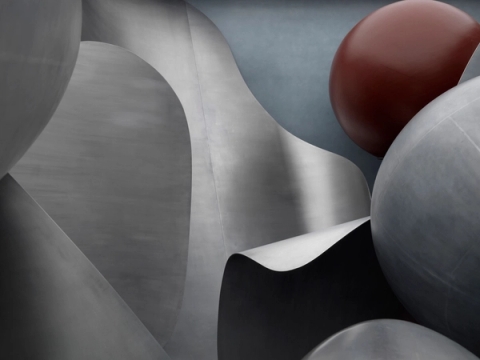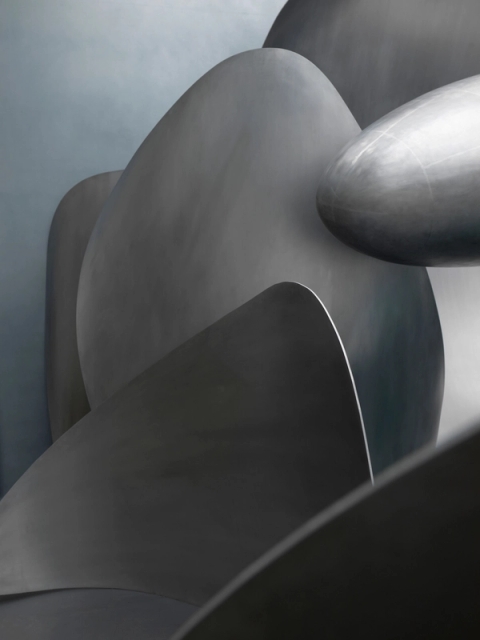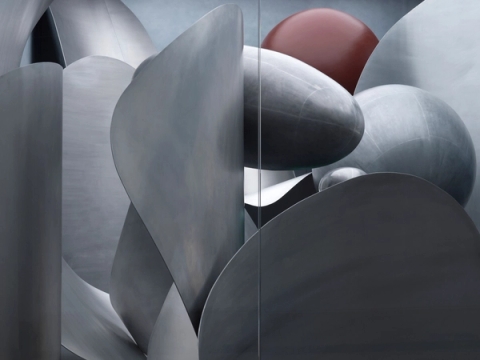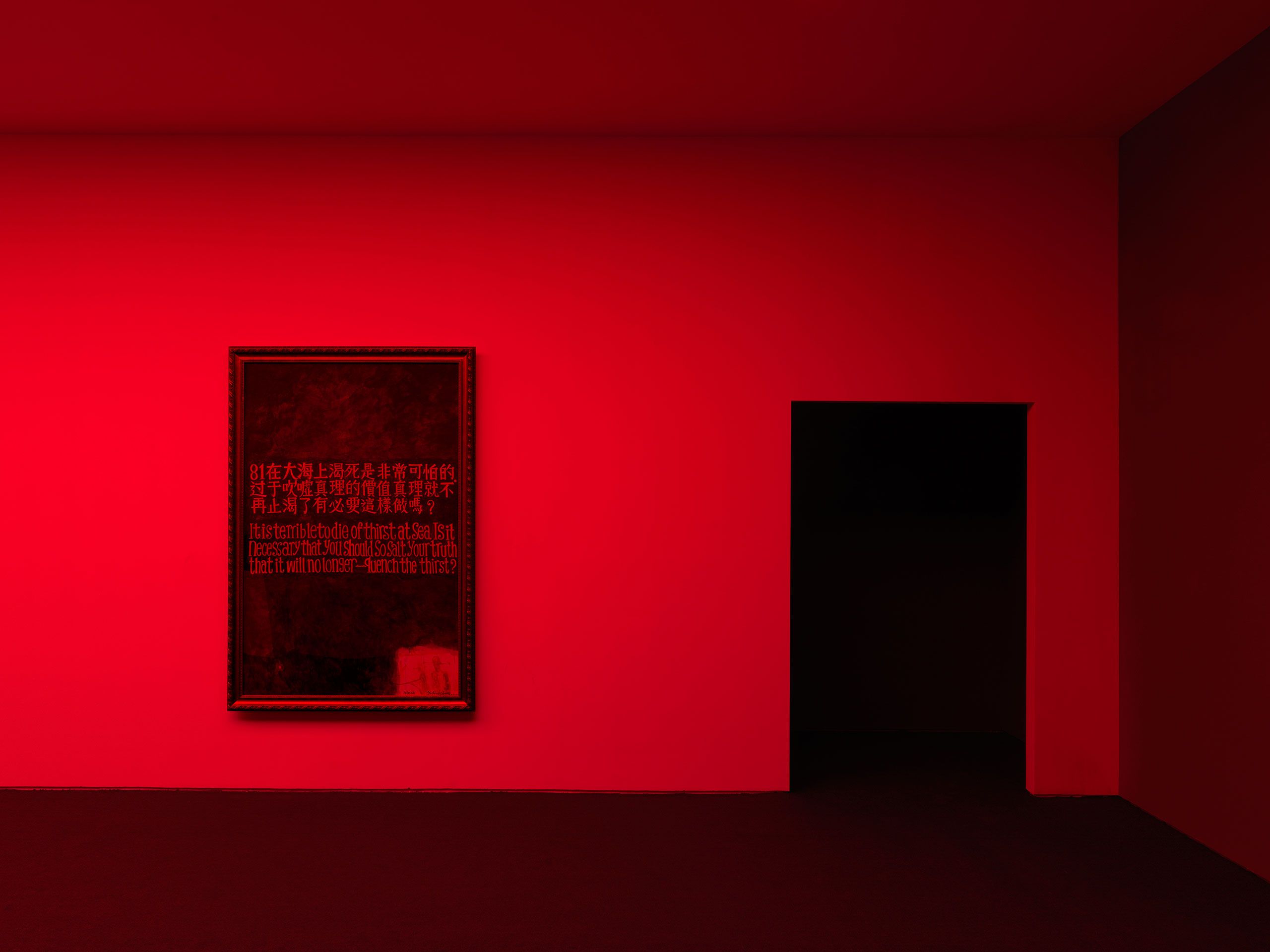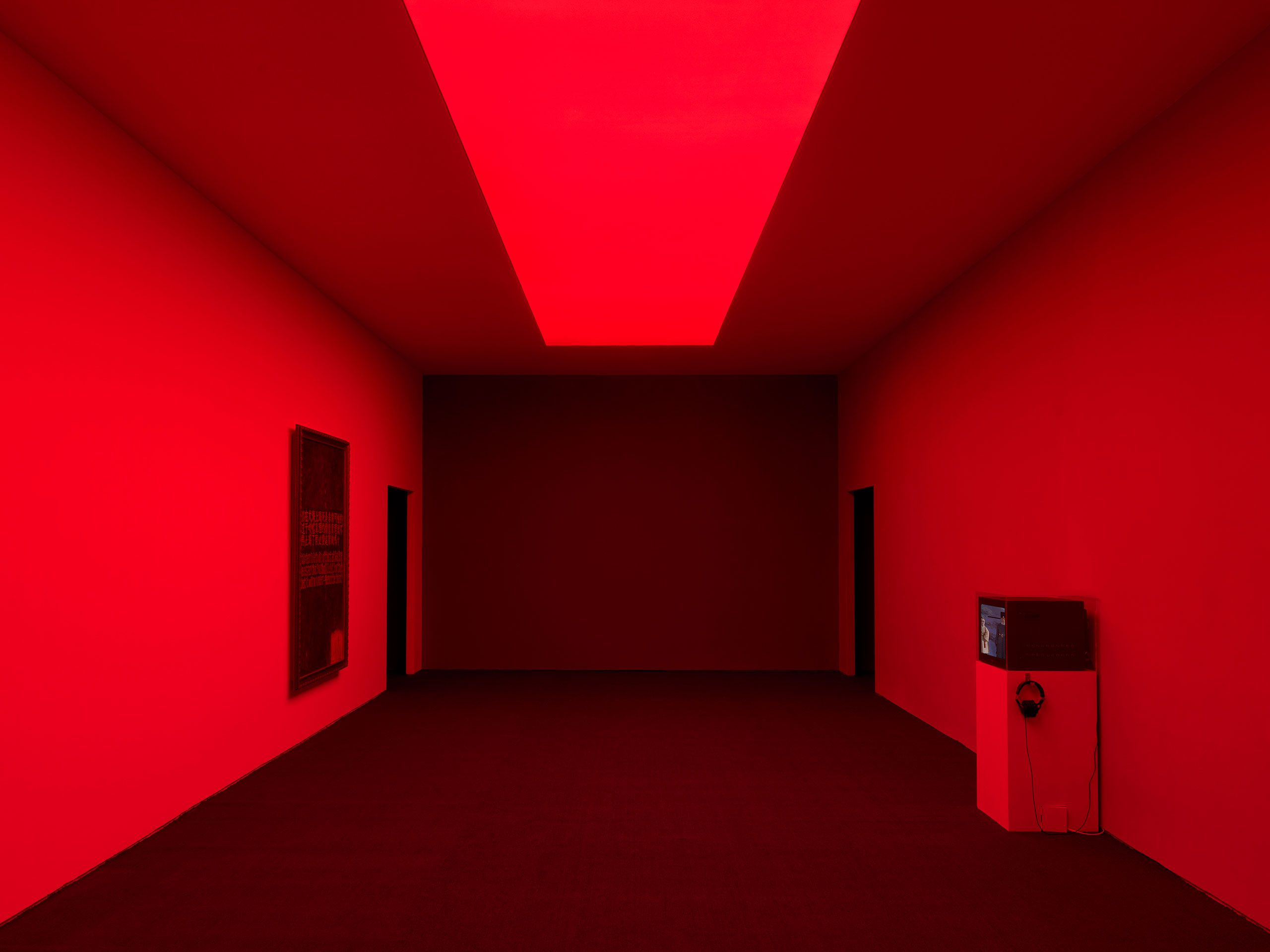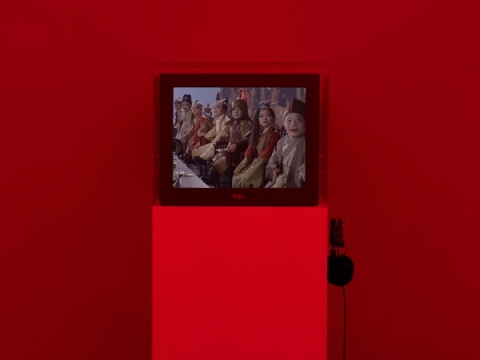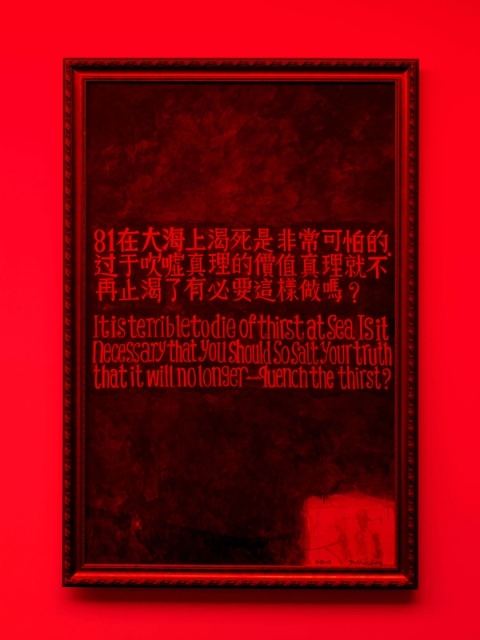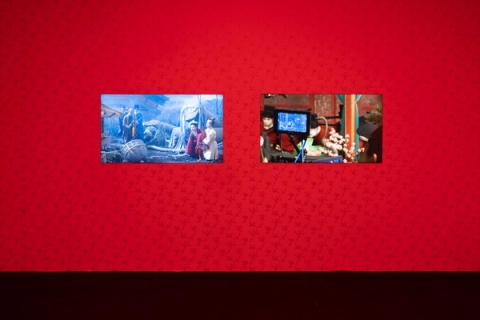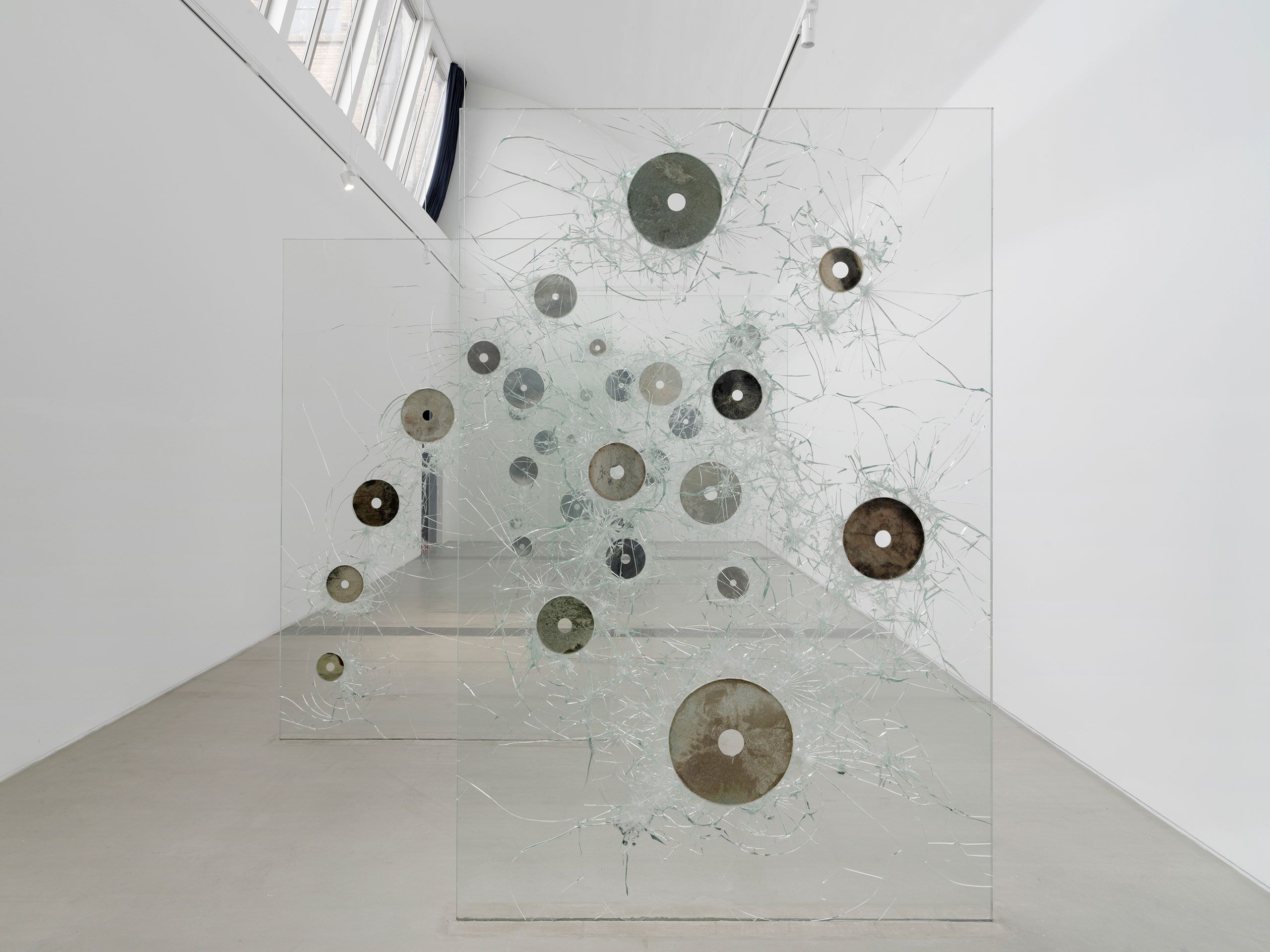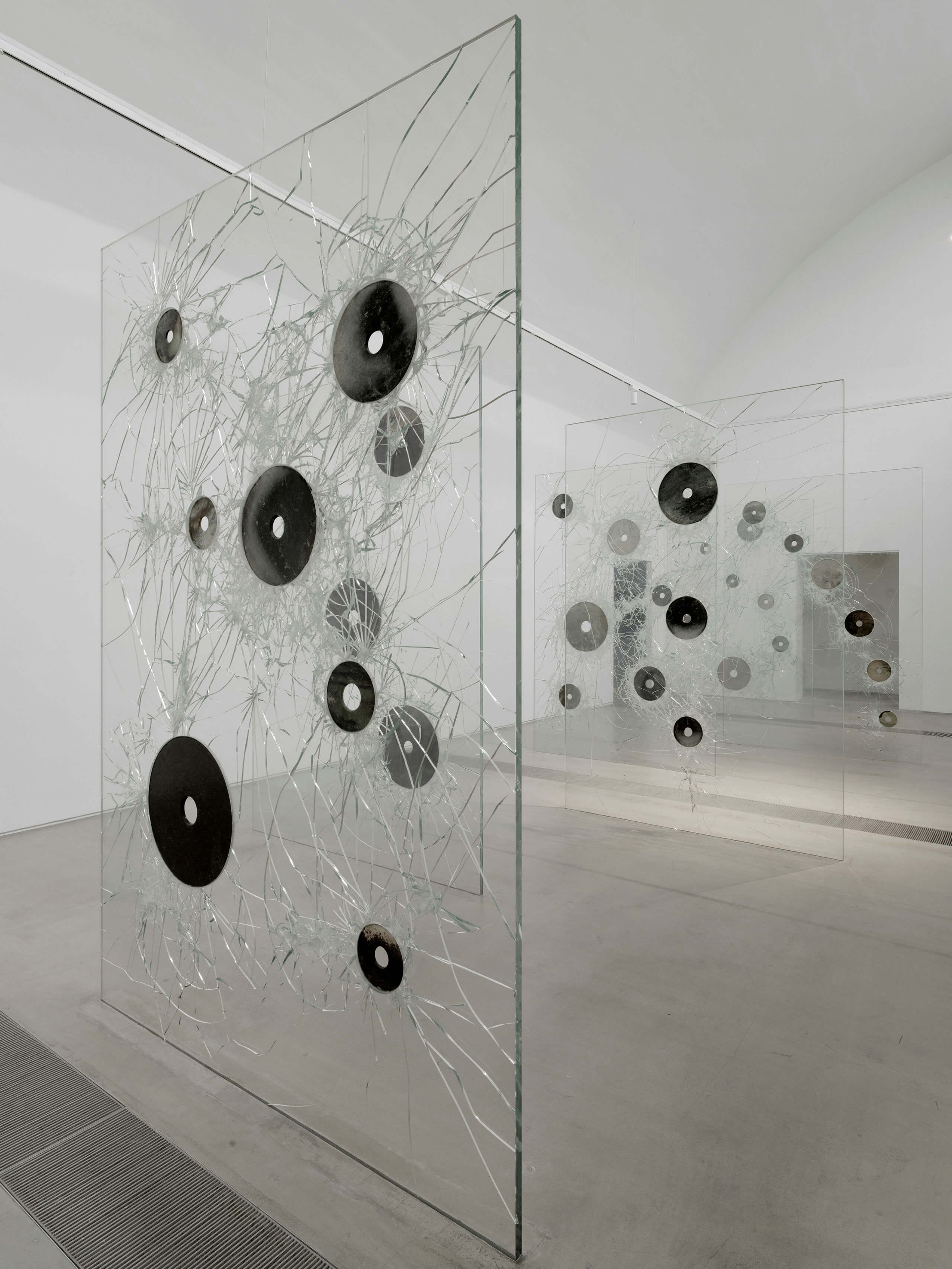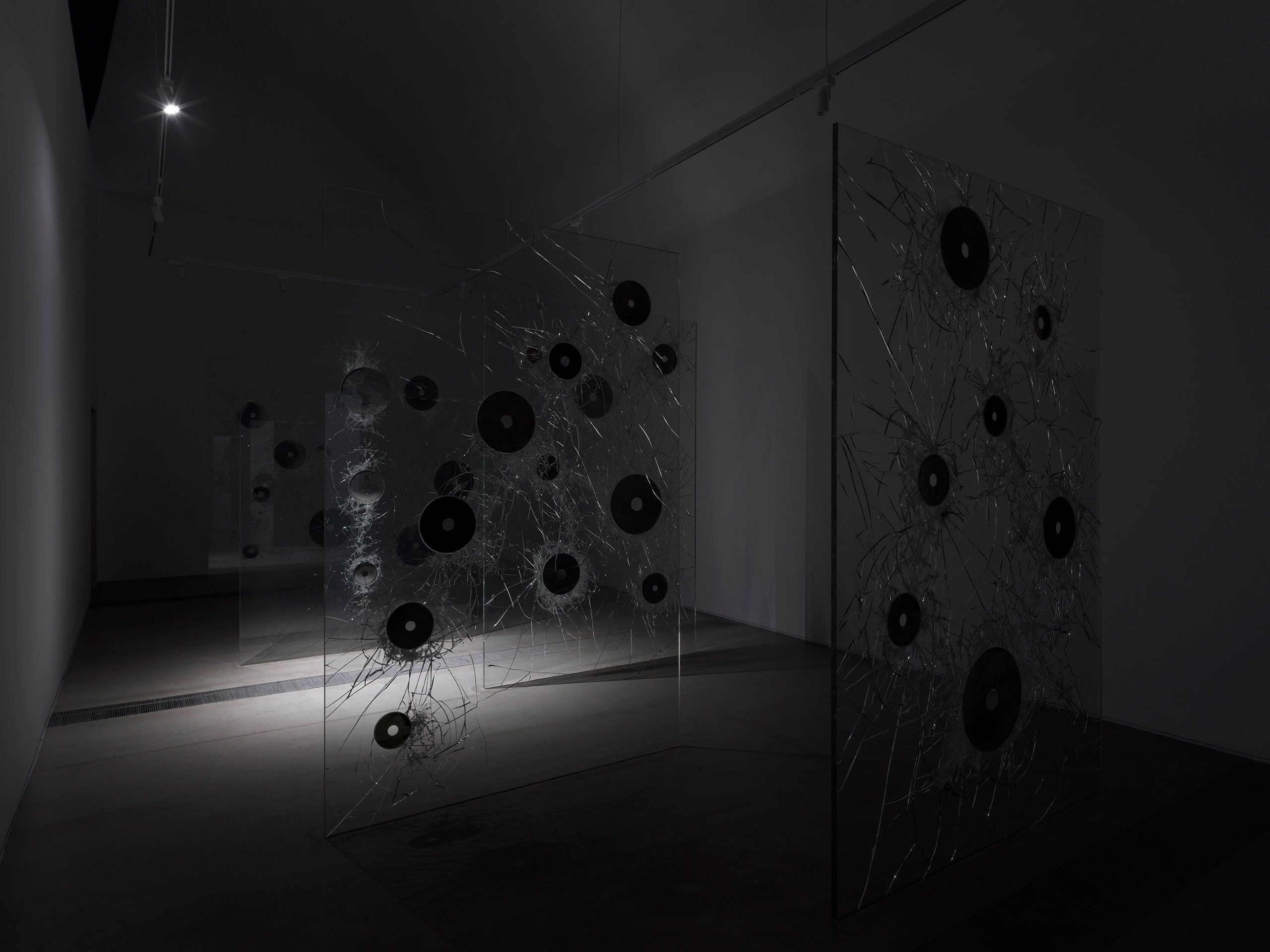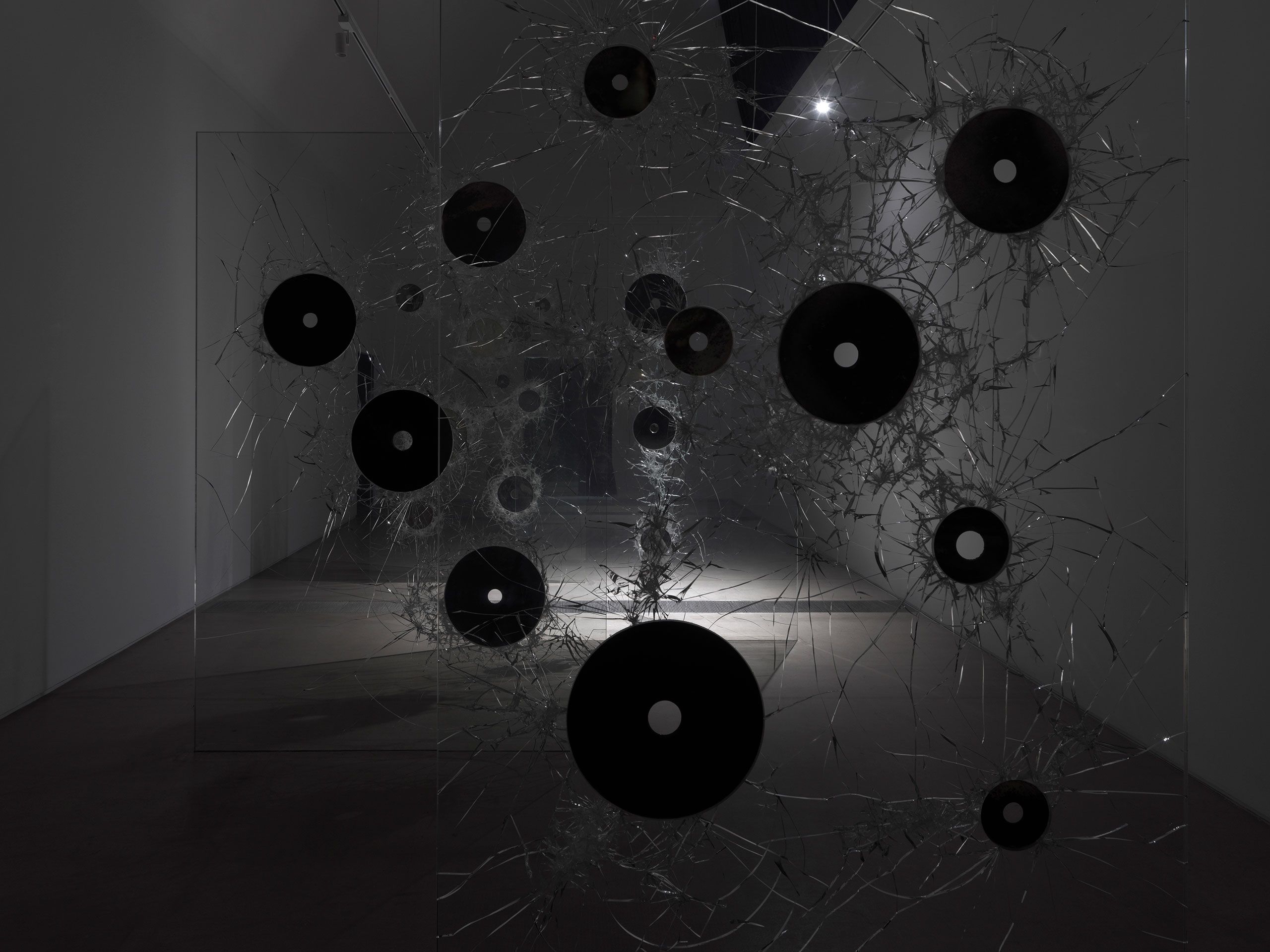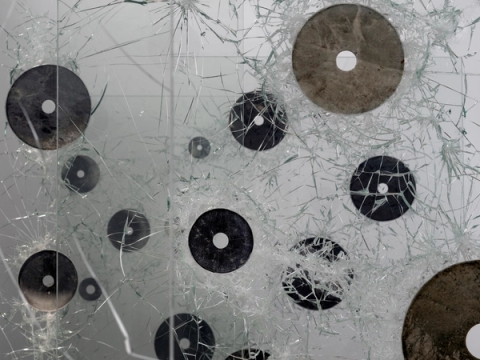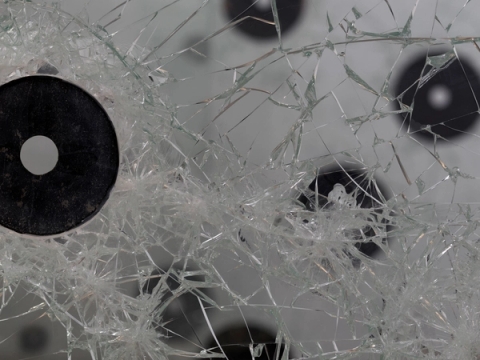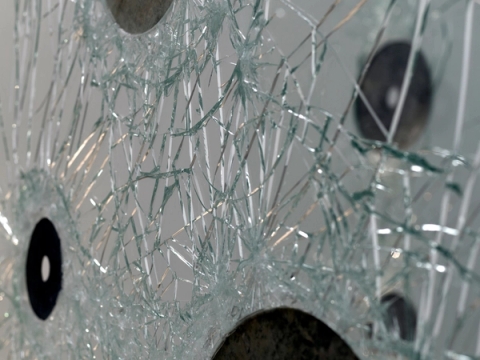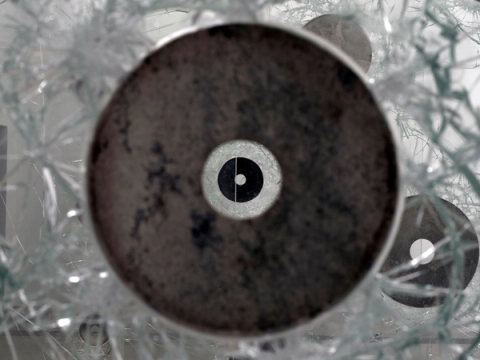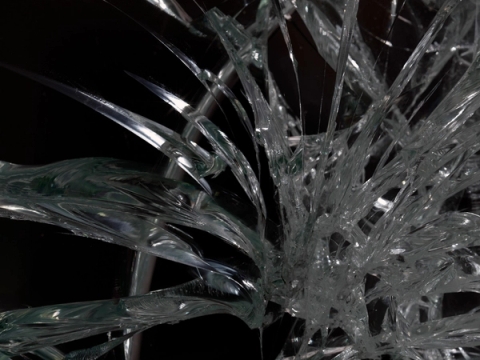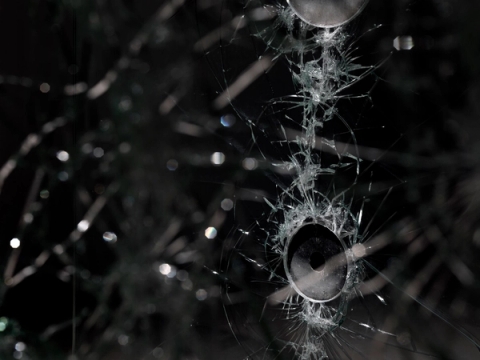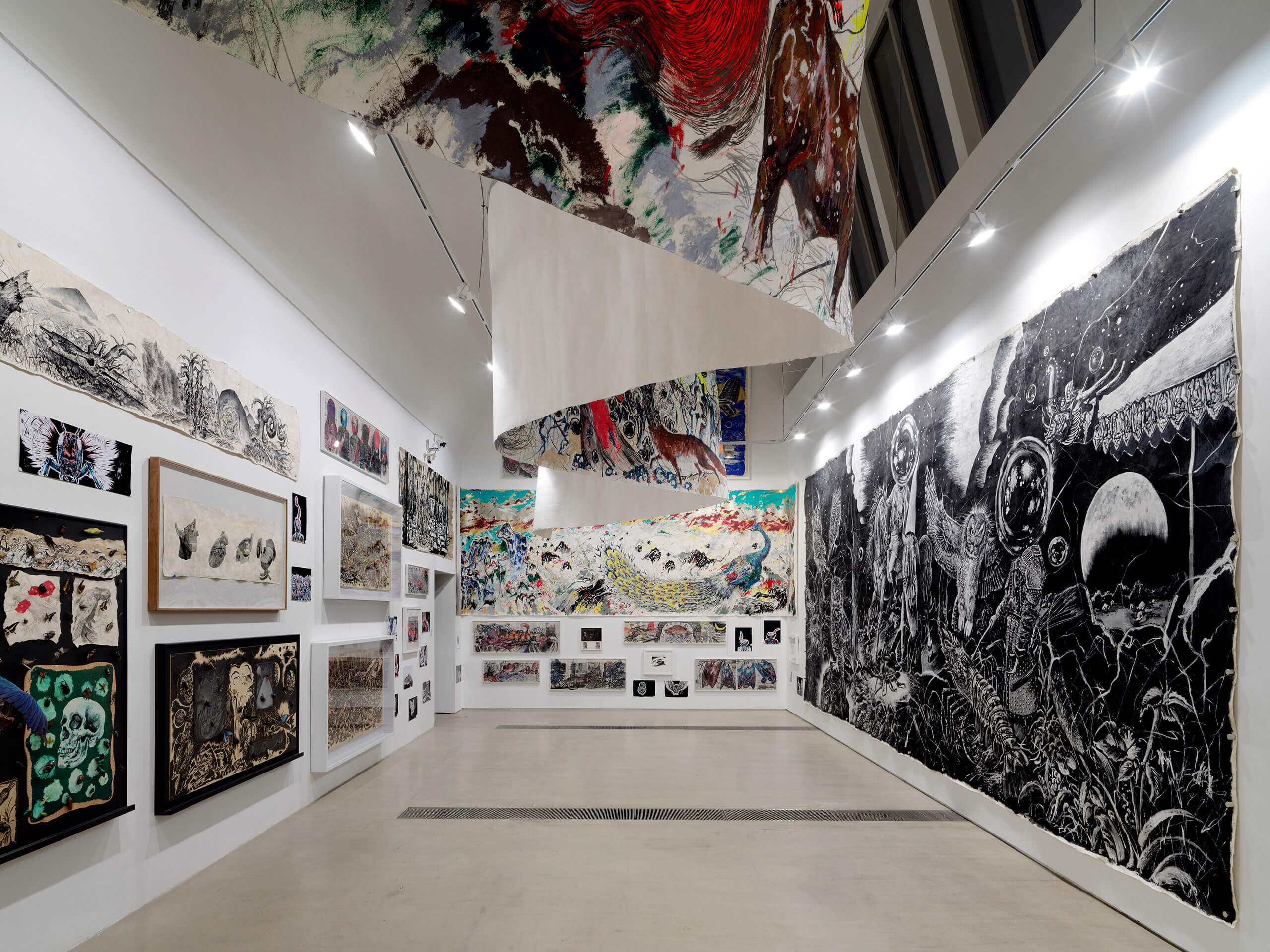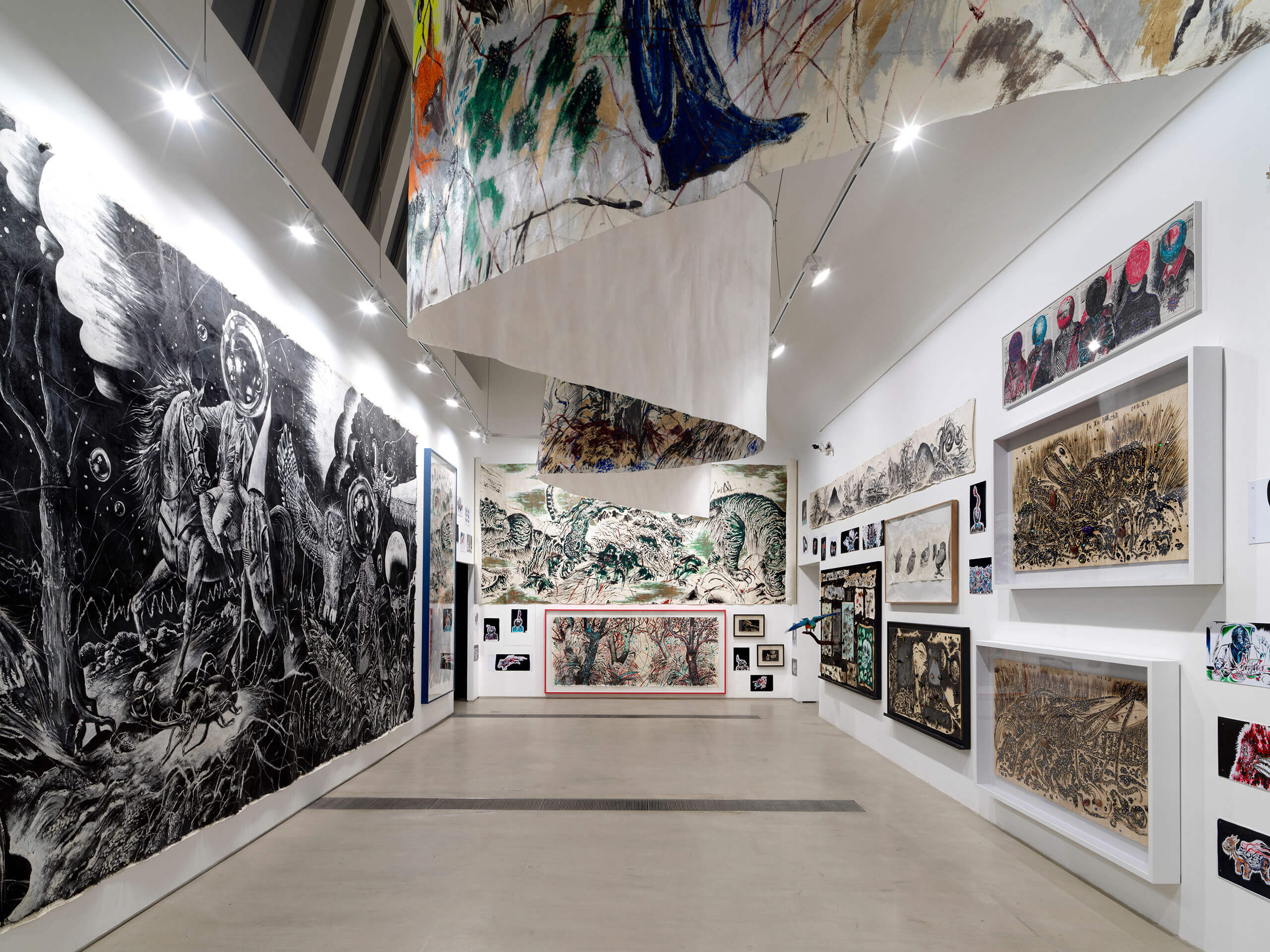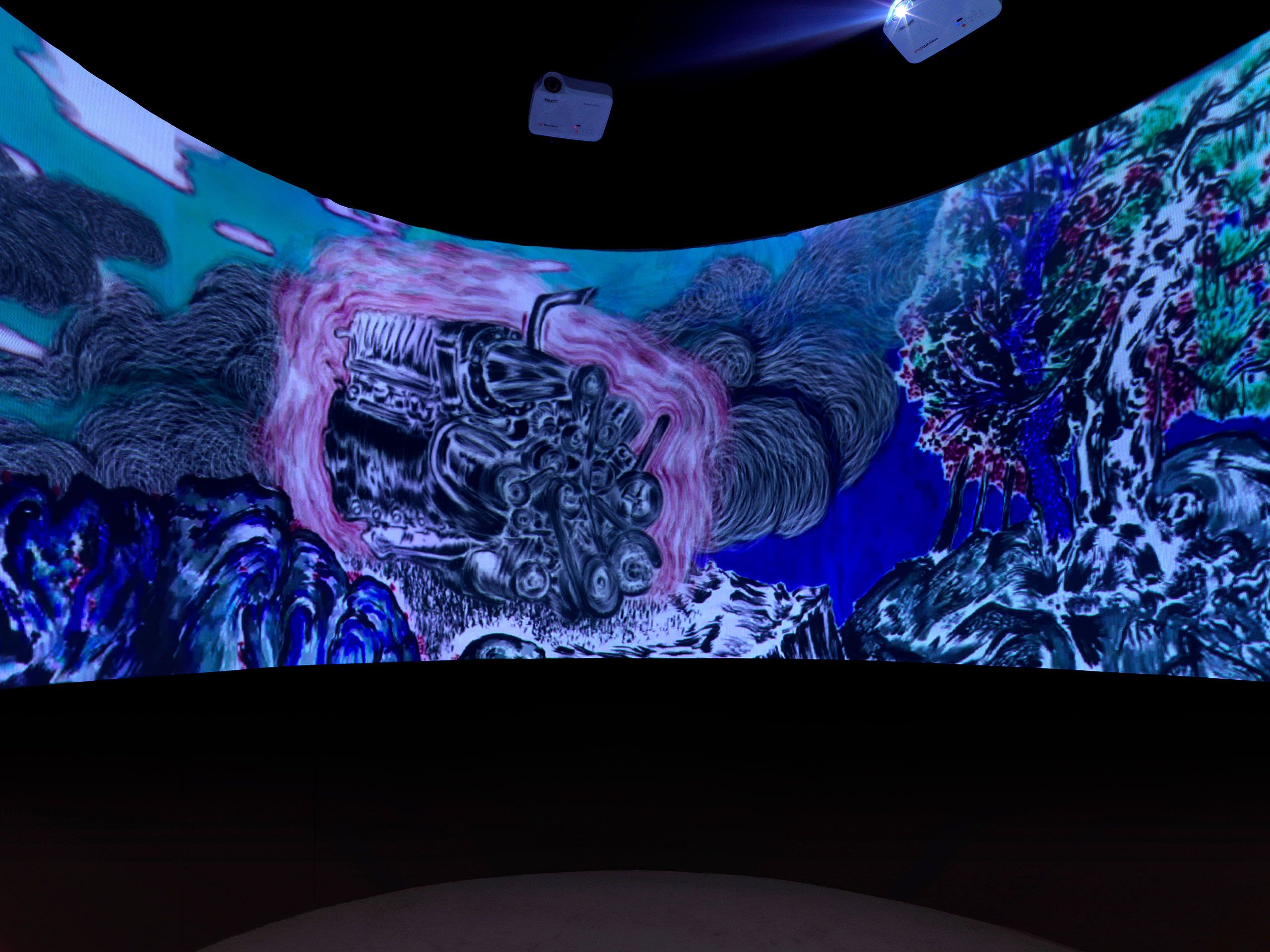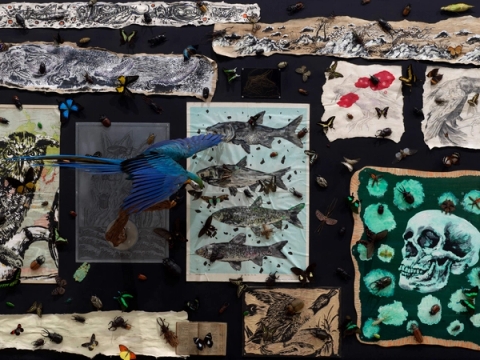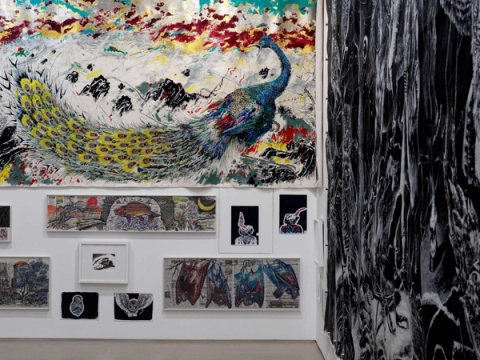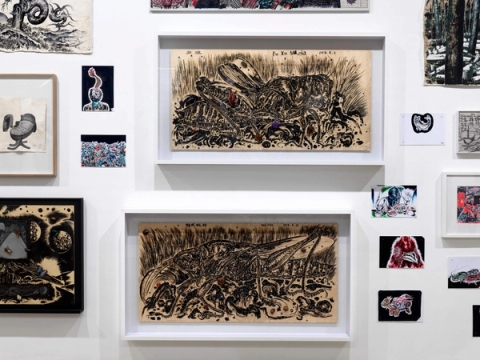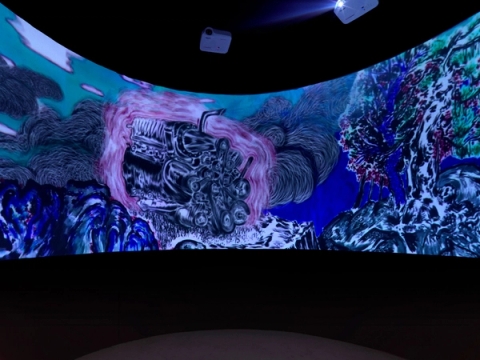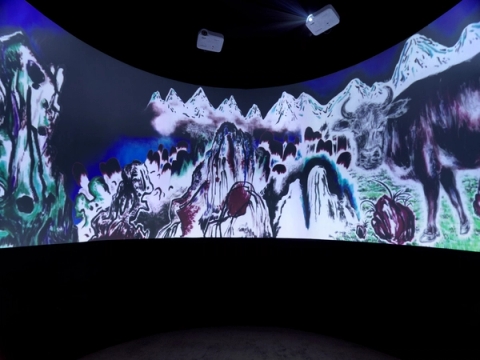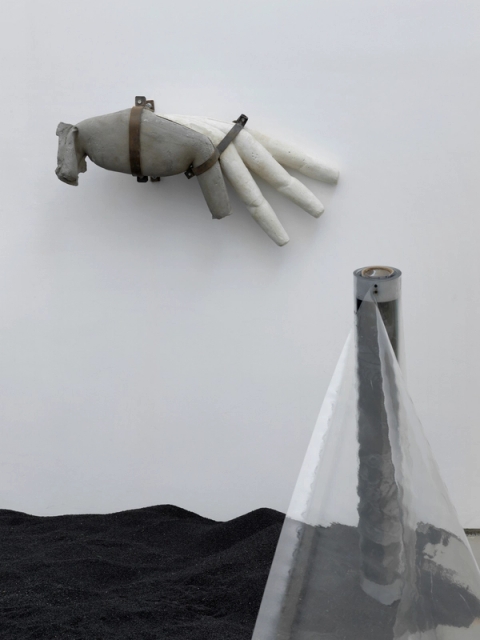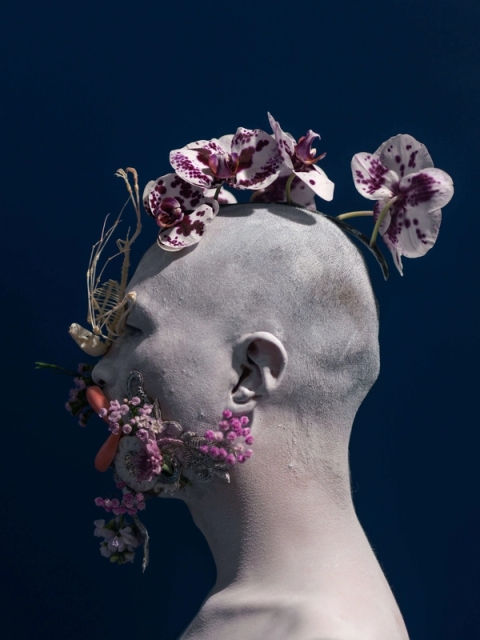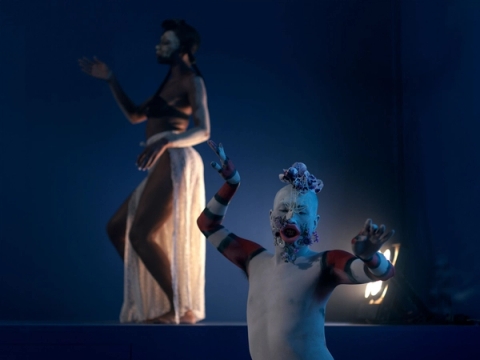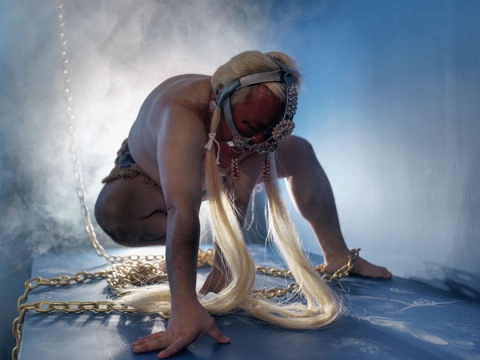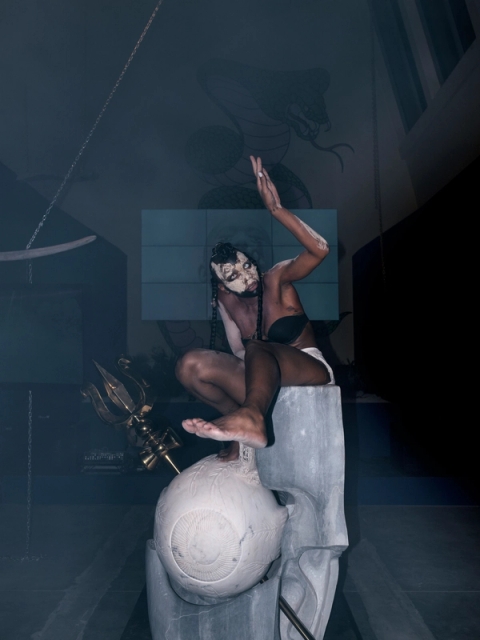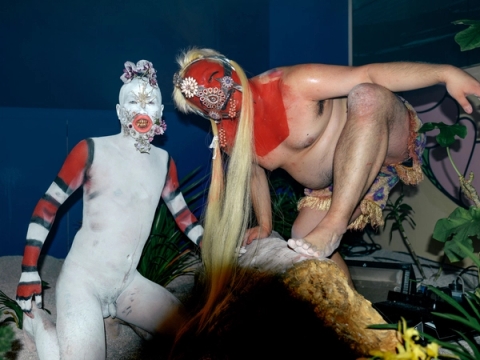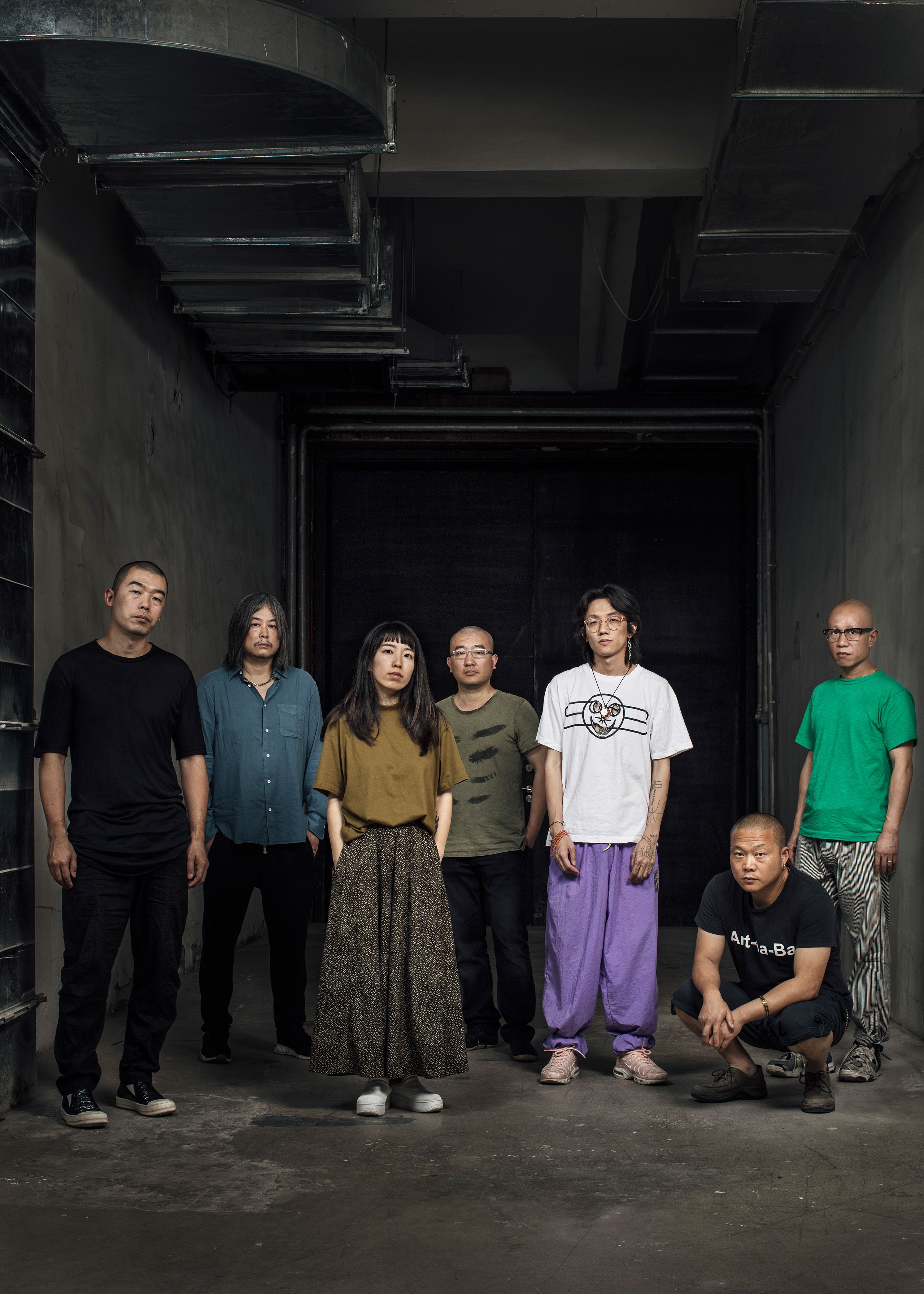

The Wind Light as A Thief is from the lyrics in Nick Cave‘s song Where the Wild Roses Grow. This song describes a love-murder case. The whole work is composed by seven characters in front of light boxes.
The Wind Light as A Thief is from the lyrics in Nick Cave‘s song Where the Wild Roses Grow. This song describes a love-murder case. The whole work is composed by seven characters in front of light boxes. They are squeezed and overlapped each other. More specifically, I saw and recombined a stolen English front character to make the Chinese character “似” which is a new method and experience for me. The Wind Light as A Thief is kind of intertextuality here. It not only points to the absent stealing (of how to create the works) but also serves as a metaphor for violence, romance and poetry of the urban growth relationship in today’s society.”
He An
The Wind as A Thief, 2014
Neon light boxes
"The Wind Light as A Thief is from the lyrics in Nick Cave‘s song Where the Wild Roses Grow. This song describes a love-murder case. The whole work is composed by seven characters in front of light boxes. They are squeezed and overlapped each other. More specifically, I saw and recombined a stolen English front character to make the Chinese character “似” which is a new method and experience for me. The Wind Light as A Thief is kind of intertextuality here. It not only points to the absent stealing (of how to create the works) but also serves as a metaphor for violence, romance and poetry of the urban growth relationship in today’s society.”
He An

He An
The Wind as A Thief, 2014
Neon light boxes
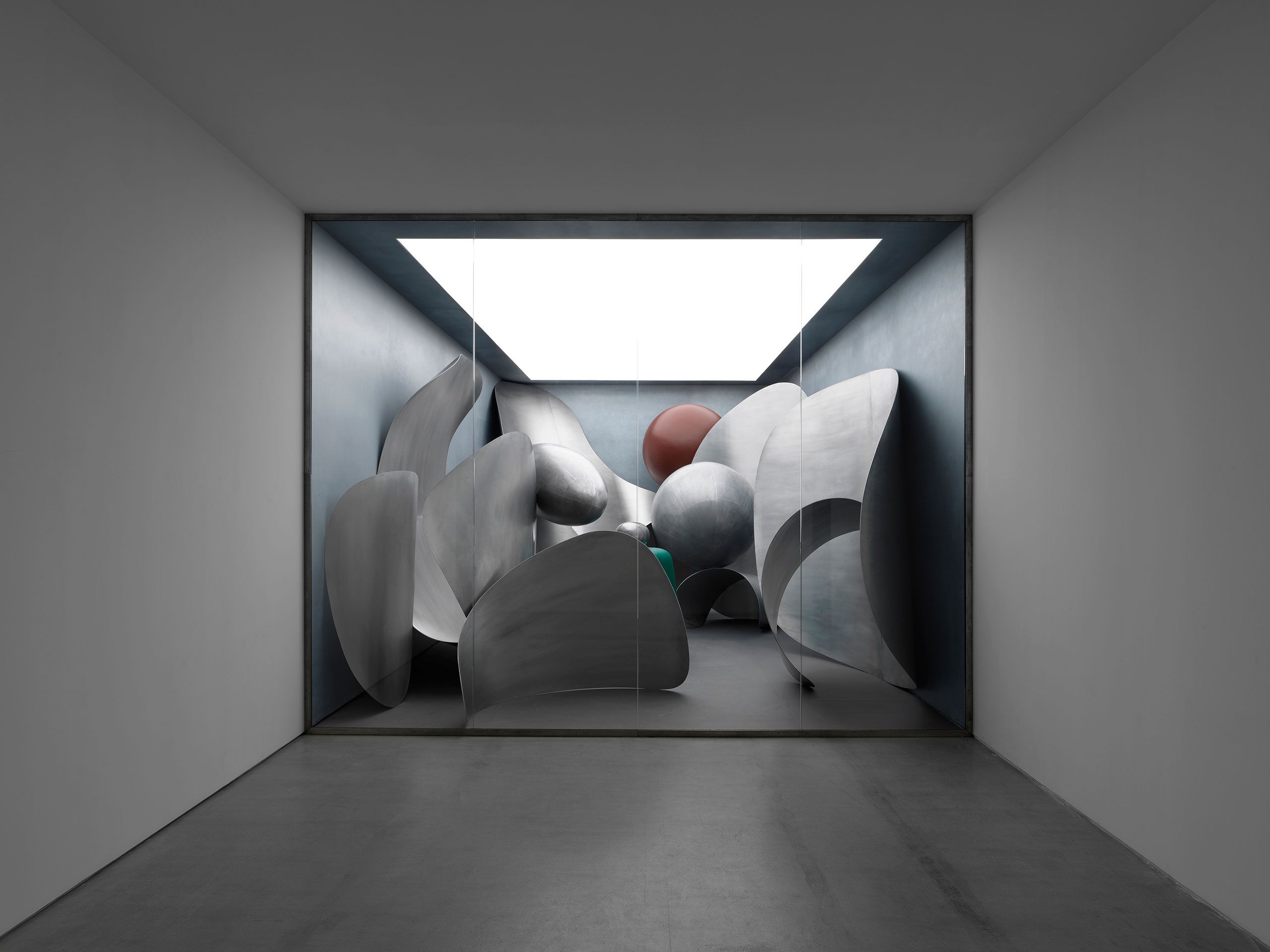
Liu Wei: Microworld
Microworld embodies a different kind of privileged gaze. In the context of the physical world, it represents the fundamental component of the world. In the anthropological cognitive system, the “microscopic world,” as the smallest, most indivisible unit from which no more cells can be divided, represents a low-level existence. Meanwhile, since molecules, elements, protons and other microscopic things are invisible to the naked eye, to the ancients, the “microworld” was a description of others, the natural kingdom from before their time, a different model of the world from the imagination. Humans needed a particular privilege to be able to complete this act of imagination, interpretation and seeing. In modern society, humanity’s reverence for the mystery of the “microworld” has been dispelled by the rationality of technology. The artist uses this artwork to elicit new reflection in the viewer on this ancient topic.
Liu Wei
Microworld, 2018
Steel and glass installation
Yang Fudong: Down Breaking - Imperial Seal
Dawn Breaking – Imperial Seal is a special series of works extended from Yang Fudong’s first Museum Film Project Dawn Breaking held in the Long Museum in 2018. Literally, “Imperial Seal” is the object dedicated to present the emperor’s authority and decree, adopted here as the title of this series which captures the important scenes and chapters in the site-specific space. Therefore, the Imperial Seal series record and reflect the different junctures throughout artist’s creation as it collectively showcases the selection of the core shooting fragments, colour tone and the only script — Nietzsche’s quotation. It forms a unique perspective to appreciate the grand museum film of Dawn Breaking.
Yang Fudong
Down Breaking - Imperial Seal, 2018
Three-channel video space installation: one old TV set, two HD TVs, acrylic on canvas, variable materials
Zhao Zhao: Jade-Constellation
Jade-Constellations is the sequel of Constellations. In Constellations, the impacts of bullets formulate the core, the emptiness and void covered in black. In this installation, the conflict is further amplified as I add in the element of Chinese ritual tool, bi. Bi is a flat jade disk with a circular hole in the center. It was first crafted during the Neolithic age, about 5,000-6,000 years ago. Bi used to be the most majestic ceremonial tool in ancient China, and has a rich history of over 5,000 years. It is considered to possess incredible energy in channeling heaven and earth spirits. It was pervasively used in sacrificial rites to the heaven, gods, mountains, the ocean, rivers, and the stars etc. Multiple jade disk of different sizes are inserted into one piece of frail glass. Surrounded by the breaches and cracks that instantaneously appear, the jade pieces resemble wormholes that come into being with the abrupt eruption of energy.
Zhao Zhao
Jade-Constellation, 2018
Glass, jade disk, 300 x 200 cm
Sun Xun: Various Works
The works of this exhibition include my drawings, animation backgrounds and manuscripts that I composed at my art residencies around the world. The ideas of the works were from locals. These works will be shown together in Beijing, to some extent, the exhibition is like a museum about drawing and the inspirations of drawing in narrations. The animation in this exhibition is The Time Vivarium, which is about “bias in civilization”. This is related to my understanding of this world, connected to my memories about my father, and based on the scrutiny of the cultures. We are the accomplices of time, as well as the props of the “conspiracy”. And this “conspiracy” may only originate from a kind of bias?! “Bias” is a wonderfully emotional certainty, whether one looks down onto this world from the cultural mirage or peeps at reality through the insignificant individual perspective; whether we miss out on the rays of the sun, or the projections under the sun, very few would understand that the world is a mighty bright spot. It has both dark shadows and the glorifying sunshine, and every point in time and space has been as such.
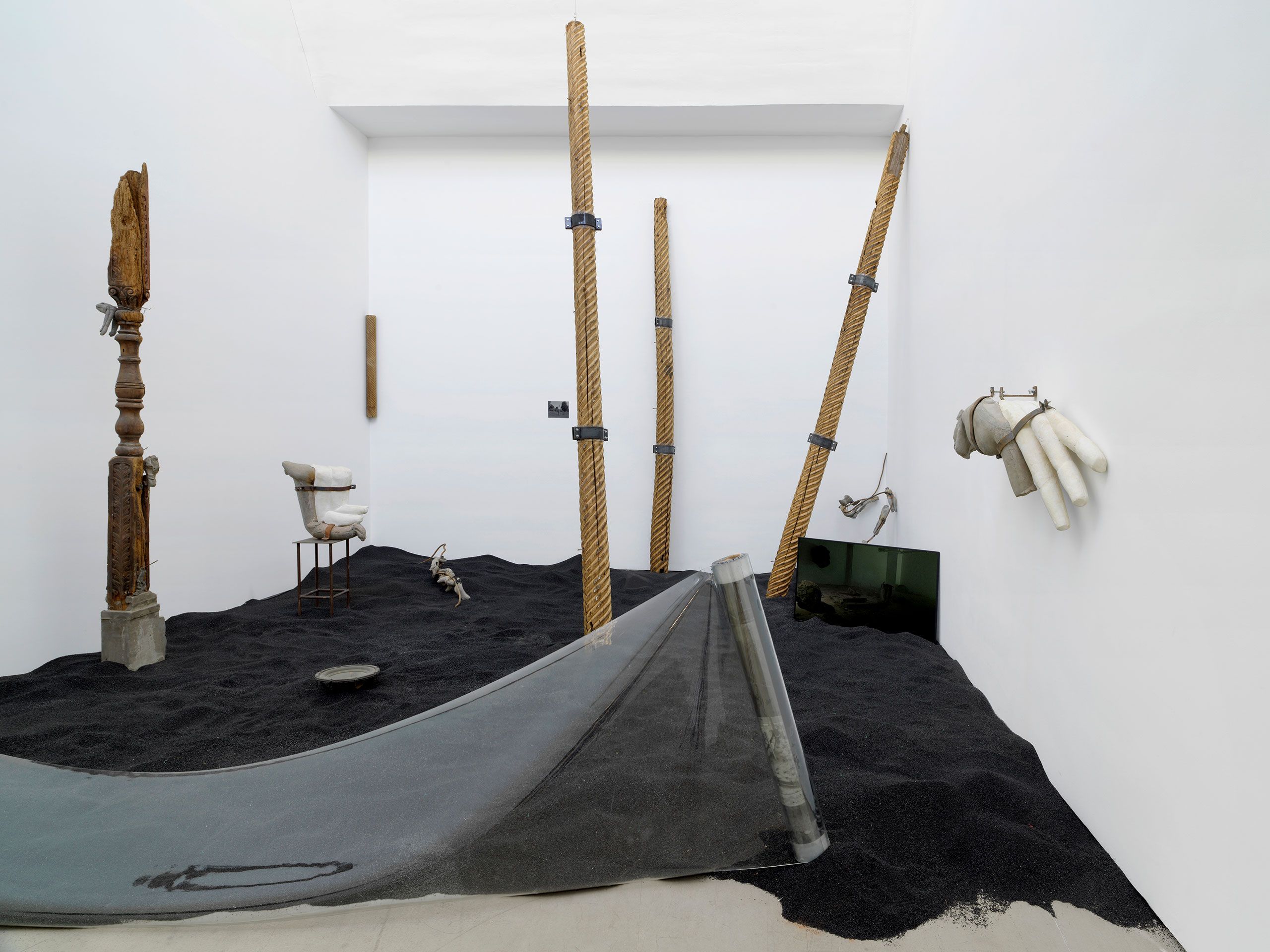
Yu Ji: Various Works
I hope that my recent works continue to develop in the context of “landscape quality”. According to the layout plan of space scene, the sculptures of different “paragraphs” turn up, which lead to the presentation of time. The entire room is treated as a whole. The materials and sculptures play the role of architecture and body. The simulation and imagination of their original image is a myth. The voice is a hymn. A hymn of the feedback from the human body and dust in an almost enclosed space.
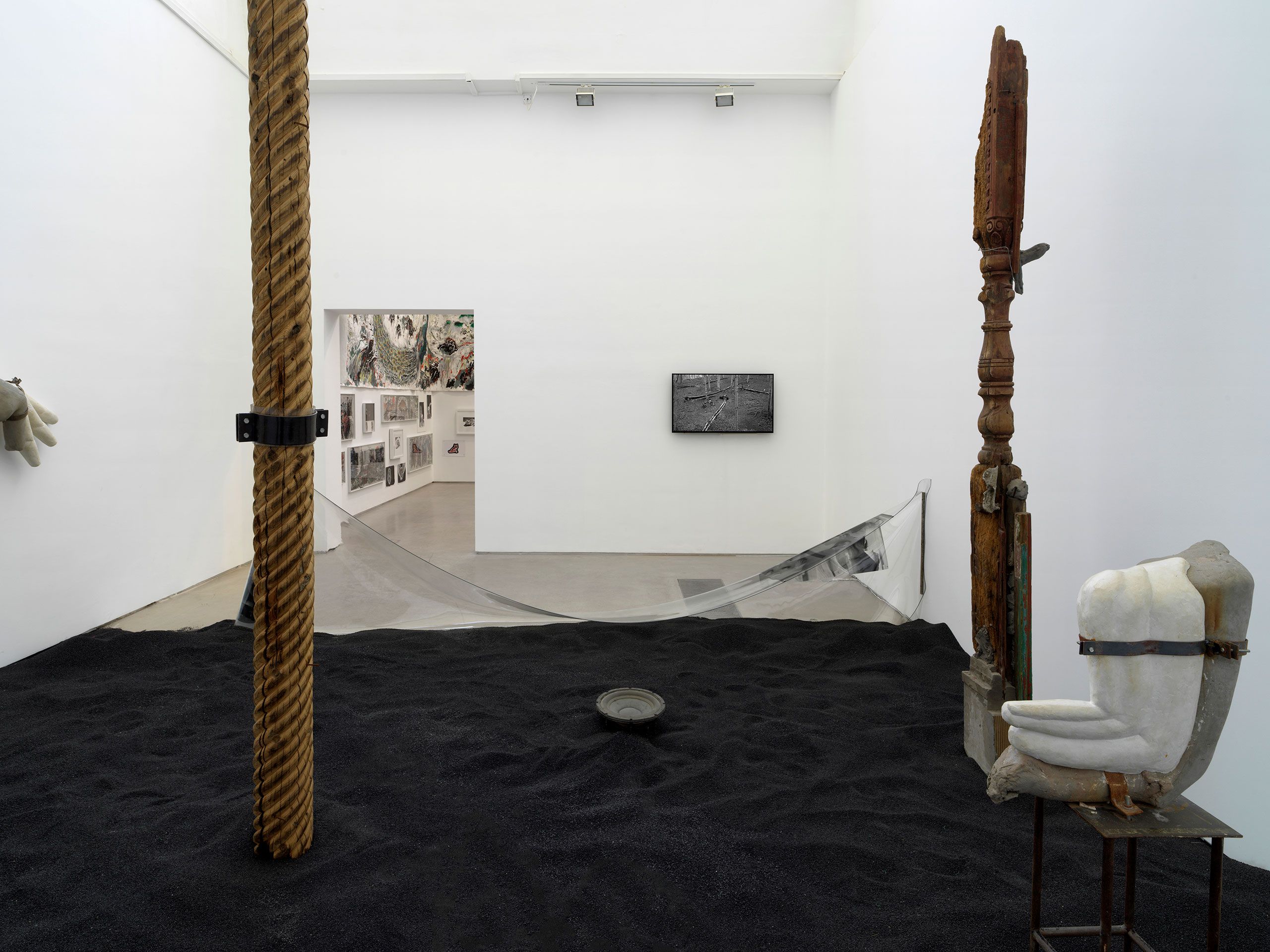
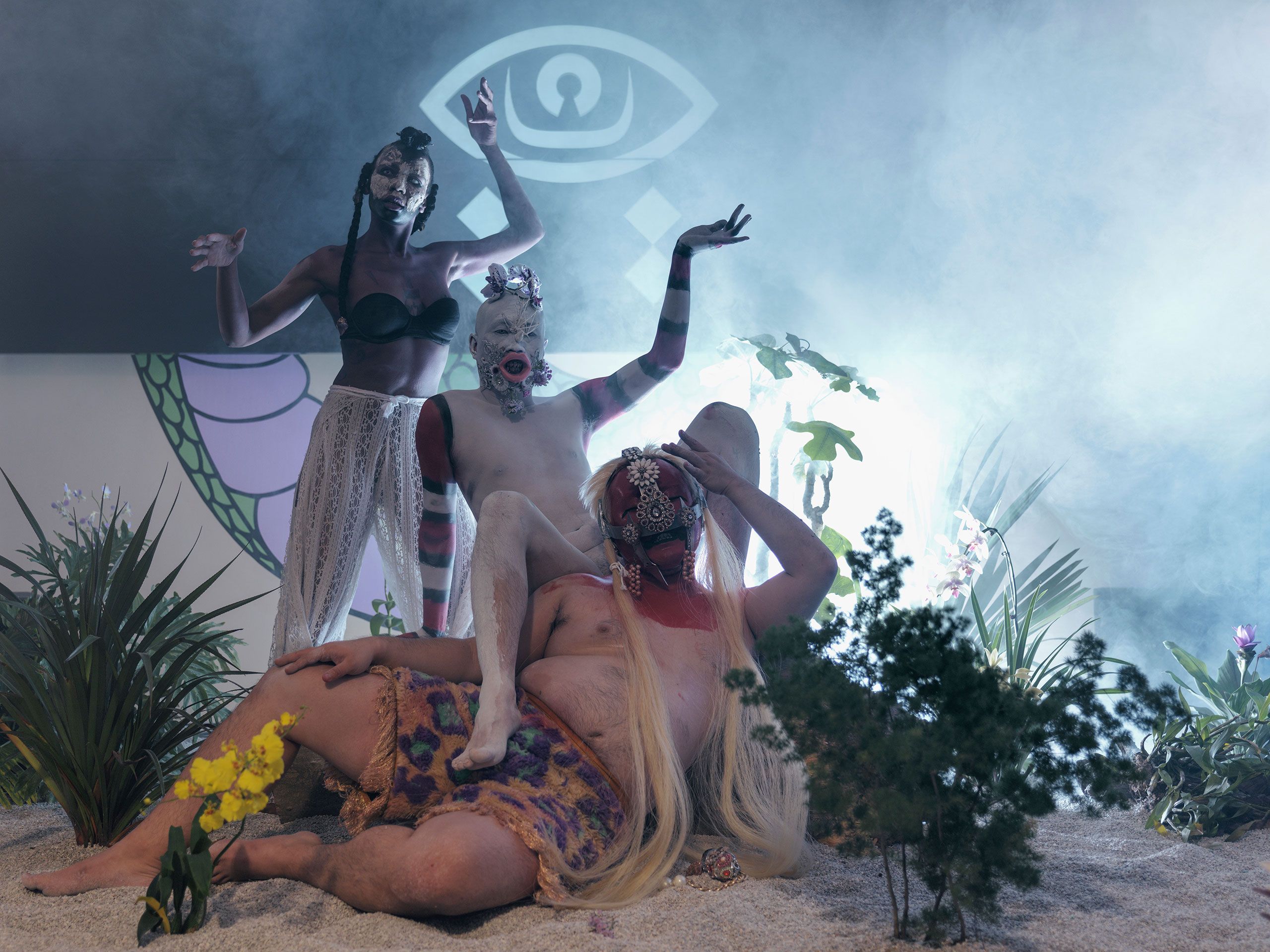
Chen Tianzhuo: Ksana
Ksana is an excerpt of a larger 12-hour performance that Chen Tianzhuo is currently developing. The 3-hour performance takes its title from the “900 arisings and ceasings” in each ksana (the shortest unit of time) as mentioned in the Buddhist text “The Humane King Sutra.” The piece is a semi-improvised experiment in physical performance, differing from the extensive planning behind Chen’s previous theatrical work. The audience may freely move around the installation space as they experience the piece, encountering the symbolic bodies of the half-human, half-god performers. Calm, atmospheric music and piercing metal guitar alternately resonate, creating a fierce shamanic ritual that is almost like a contemporary exorcism. The performers express and confront desires from the viewer’s own hearts, just like the wrathful deity Makahala.The video piece G.H.O.S.T. is directed by Chen Tianzhuo, featuring contributions from two performers and a musician. In the Indian holy city of Varanasi, on the banks of the Ganges River, they perform a type of street theatre. As a holy river of Hinduism and Buddhism, many Indians believe that the Ganges flows out of Shiva’s hair, and that its waters may wash away their sins and release them from the cycle of reincarnation. The piece was recorded over two days and one night, the performers’ dancing freely recorded like in the documentation of folk culture. The performance begins in the early morning as the two dancers prepare their clothing and makeup on the banks of the Ganges, and continues with rituals on a boat drifting across the water and purification in front of the Shiva temple, before ending with a taboo dance at the riverside cremation grounds. By filming from early morning to night, as if from birth to death and then on to reincarnation, the performers passage through the flowing of time and the river’s water creates an “enchanting” experience.
Chen Tianzhuo
Ksana, 2018
Performance, 3 hours

Ragnar Kjartansson
A Lot of Sorrow
